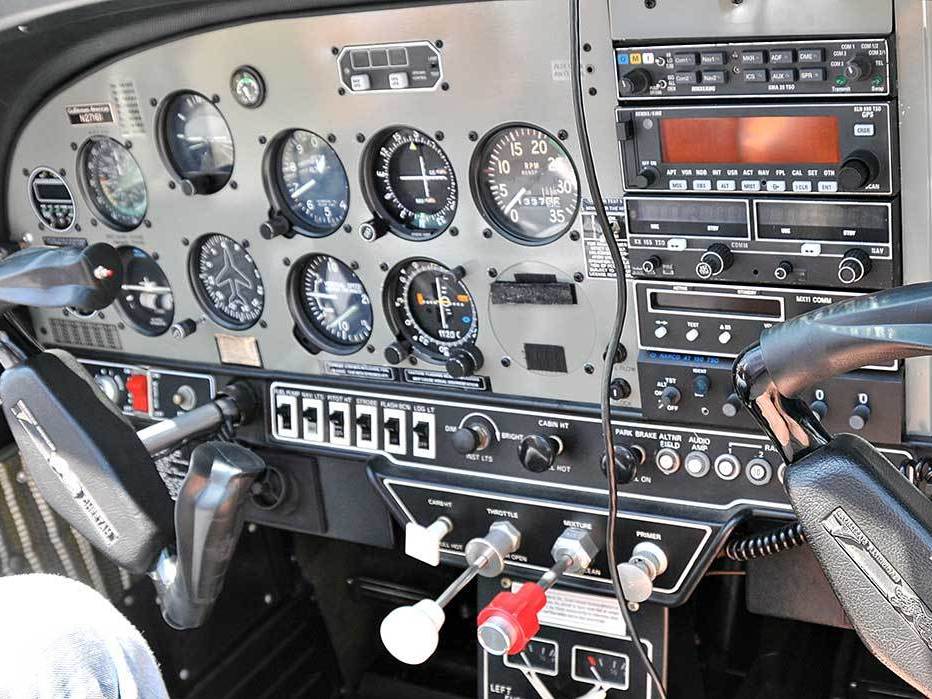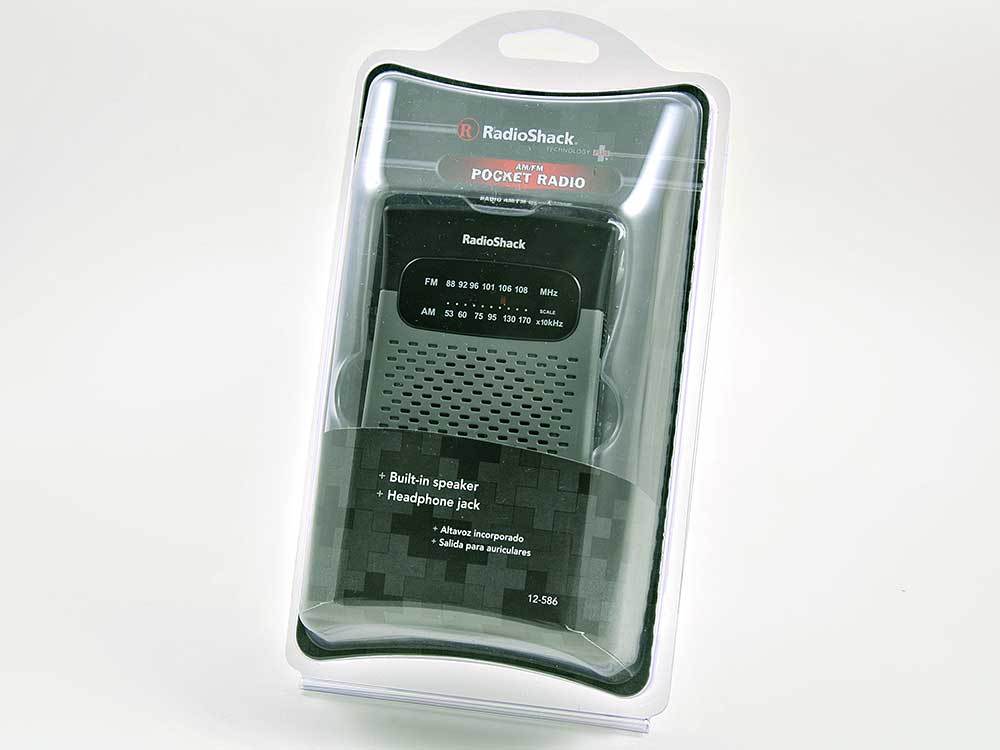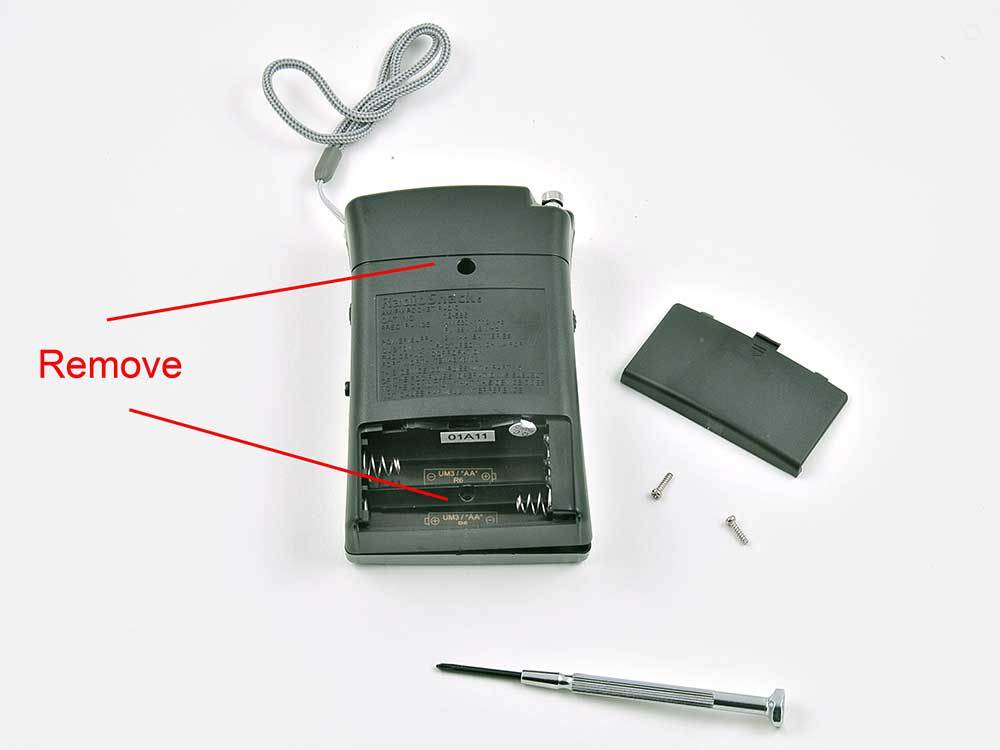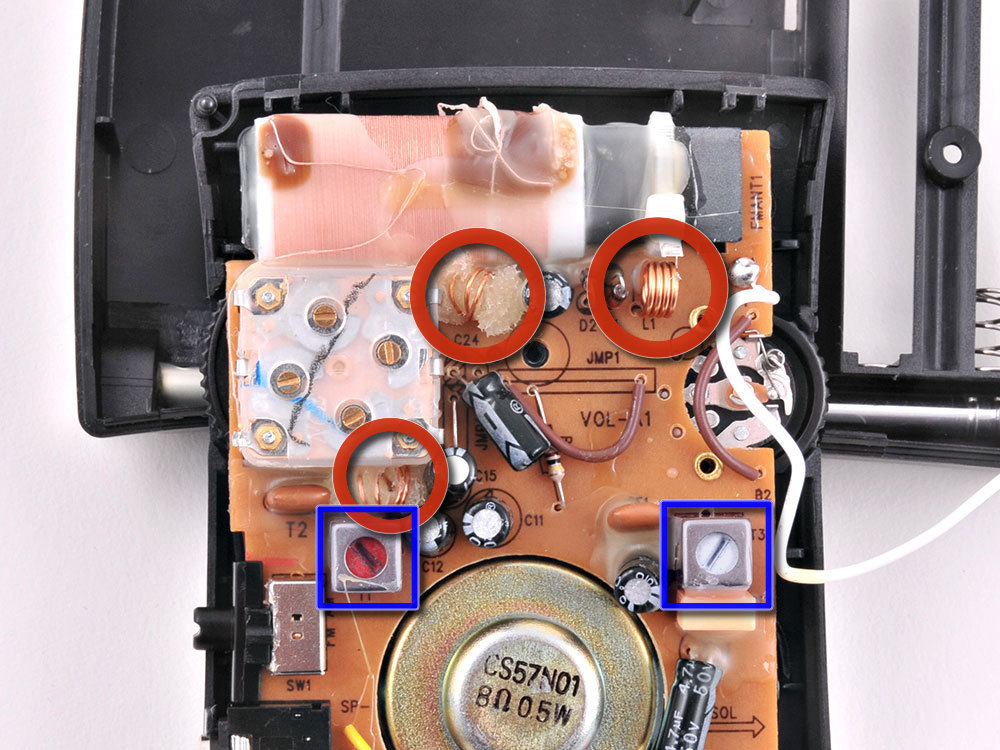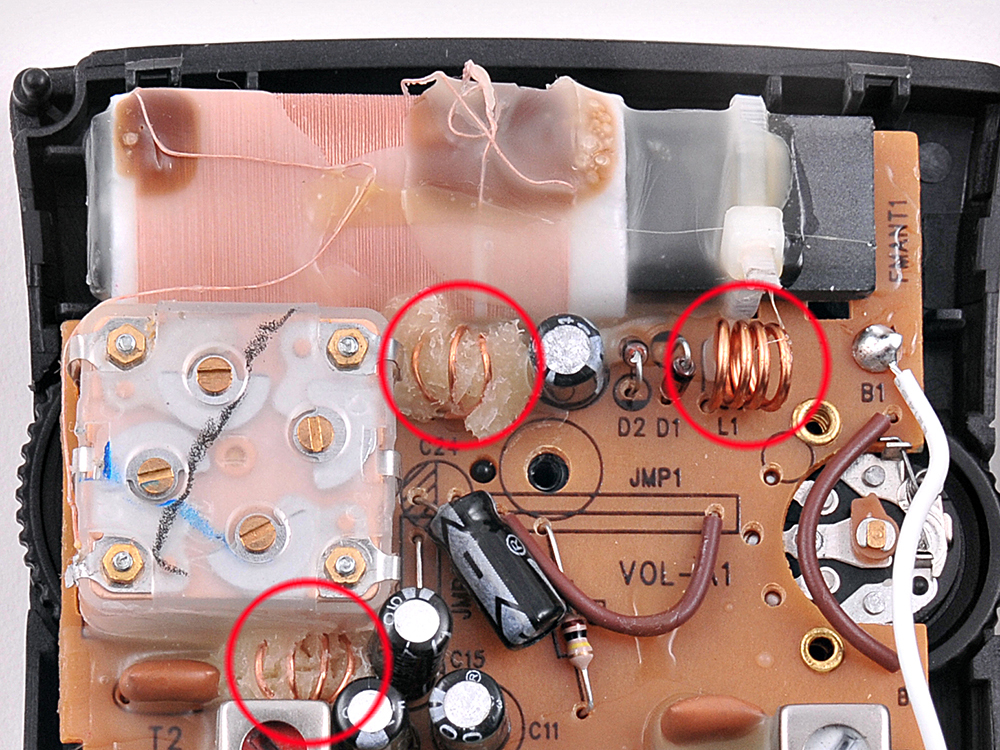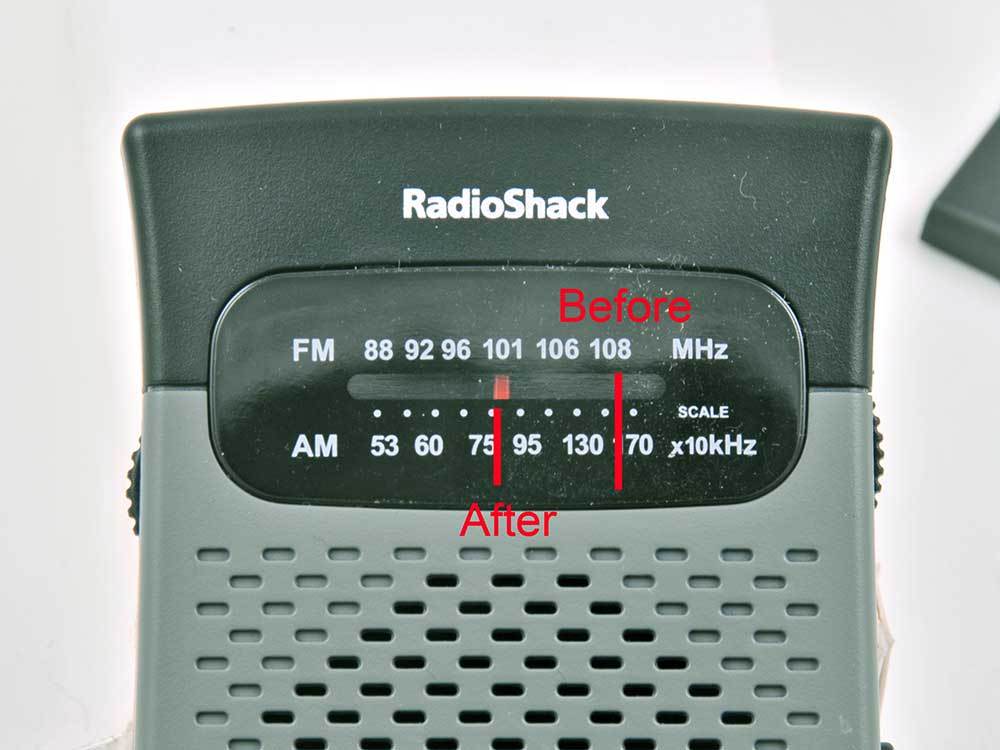Retune the radio and check that the original station is still available, but lower down on the dial.
In the picture you can see that the station around 108 MHz has now moved down to the location marked 101 MHz on the dial.
The final step is to turn the radio dial in-between stations, so that all you hear is hiss. Now adjust the tuning transformers so that this hiss is at the loudest possible level.
Congratulations! The modifications are complete. Put the case back on and let’s pay a visit to the local airport to try it out.
Get as close to the tower as you can, and tune the dial in the new extended region you just created. When planes are in the area, you should be able to pick up their communications!



